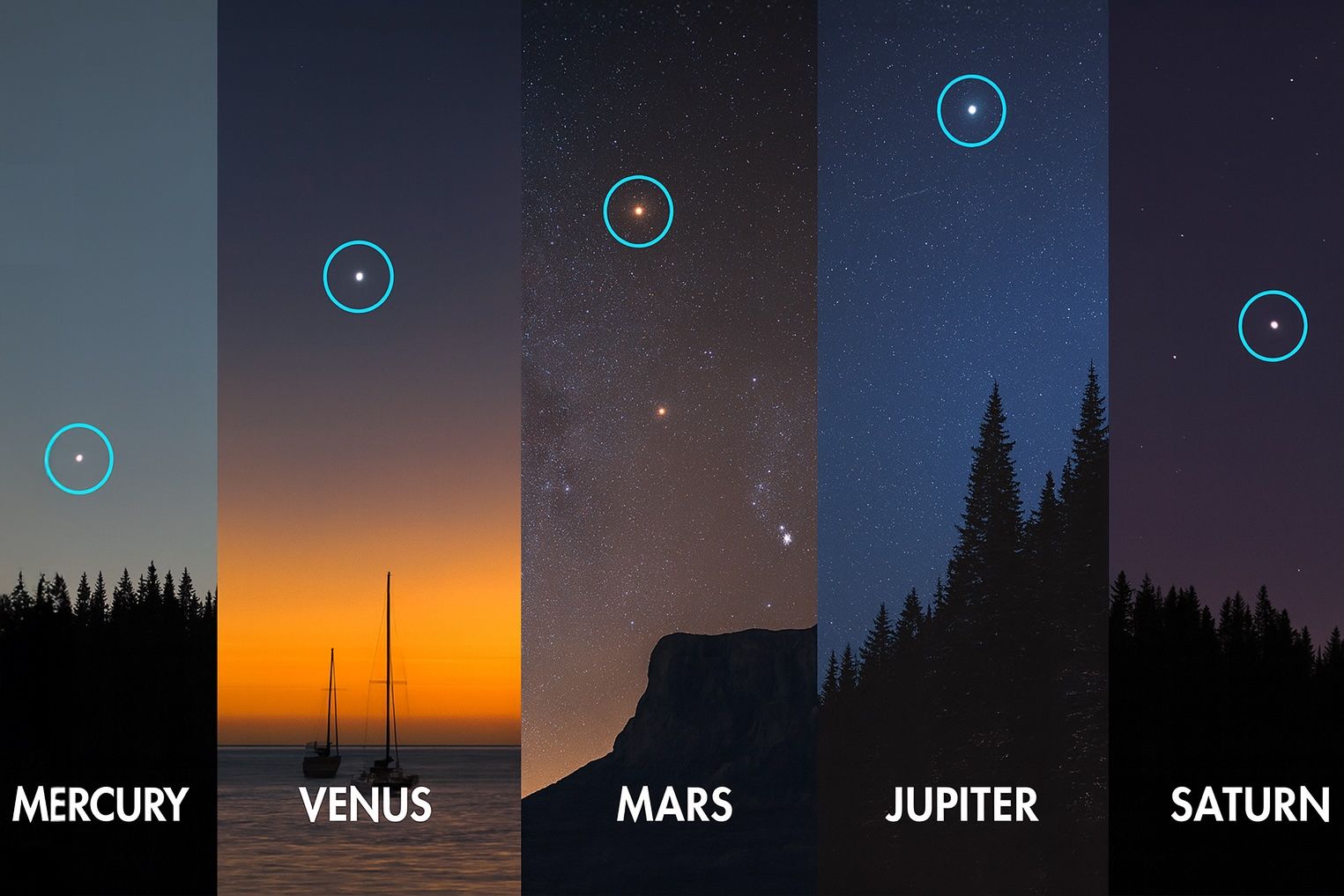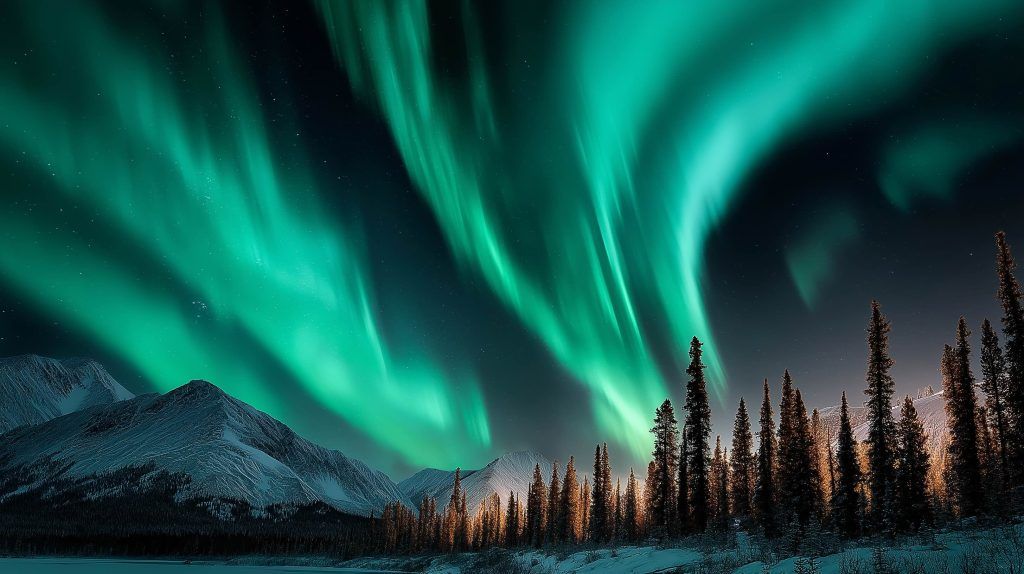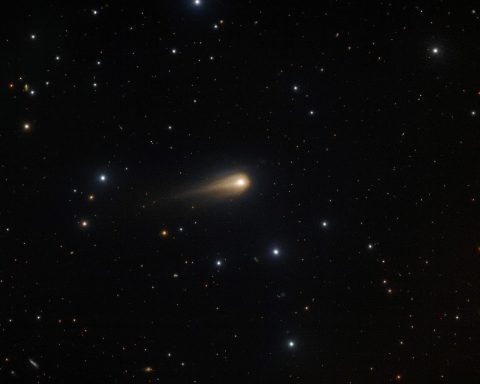- In late August 2025, a six-planet parade—Mercury, Venus, Jupiter, Saturn, Uranus, and Neptune—will be visible in the pre-dawn sky along with a rare Black Moon.
- The Black Moon moment occurs around 2:06 a.m. EDT on Saturday, August 23, 2025 (6:06 UTC), placing the new moon between Earth and Sun.
- The Black Moon itself is invisible, but its timing yields moonless, darker skies that reveal fainter stars and the Milky Way.
- The six-planet parade runs roughly August 17–20, 2025, peaks around August 18–19, and Mercury begins to drop from view by August 21. <li Mercury, Venus, Jupiter, and Saturn will be visible to the naked eye, while Uranus and Neptune require binoculars or a small telescope. <li Venus and Jupiter will be the brightest objects in the dawn sky, with Saturn higher up and Mercury tucked near the horizon.
- The best viewing is on August 18–19 when the Moon is a 26% crescent on Aug 18 and 16% on Aug 19, with a rise around 5:00–5:30 a.m. local time.
- By August 20–21 the Moon has faded to new, and Mercury becomes harder to spot as it sinks toward the Sun.
- Binoculars (7×50 or 10×50) can reveal Uranus and Neptune, and a small telescope could show Jupiter’s moons or Saturn’s rings.
- The next time all six planets will be visible together is February 2026, making this August 2025 parade a rare, year-end spectacle.
The night sky is gearing up for a double feature that has astronomers and skywatchers buzzing. In late August 2025, a six-planet alignment – popularly dubbed a “planet parade” – will grace the pre-dawn sky just as a rare “Black Moon” darkens the night. This cosmic coincidence offers a unique stargazing opportunity with multiple planets visible at once under moonless, star-studded skies. Below, we break down what these phenomena are, why they’re special, exactly when and where to see them, and how to make the most of this celestial show. We’ll also share expert tips, quotes from astronomers, a roundup of news coverage, and a look at the cultural significance behind such events.
What Is a “Black Moon” and Why Is It Special?
[1] [2]In astronomical terms, a “Black Moon” refers to an unusually rare new moon. Specifically, the Black Moon arriving in late August 2025 is the third new moon in a season that has four (an “extra” new moon in the summer period), a phenomenon that occurs roughly once every 33 months [3] [4]. (By contrast, the more common definition of a Black Moon is the second new moon in a single calendar month, which happens about every 29 months.) In this case the Black Moon’s moment will occur around 2:06 a.m. EDT on Saturday, August 23, 2025 (6:06 UTC) – late on August 22 for western North America and in the early hours of August 23 for most of the world [5].
Despite its eerie name, a Black Moon isn’t visually menacing – in fact, you won’t see it at all. That’s because it’s essentially a new moon, the phase when the Moon sits between Earth and the Sun and its Earth-facing side is entirely in shadow [6]. Like any new moon, the Black Moon will be invisible against the Sun’s glare [7]. What makes it special is not any spooky appearance, but its timing and effect on the night sky. With no moonlight at night, stargazers are treated to truly dark skies, allowing fainter stars, the Milky Way, and other celestial sights to pop into view with exceptional clarity [8] [9]. “Although you won’t be able to see the black moon with the naked eye, its timing offers a special opportunity for stargazers: a moonless night perfect for enjoying the summer stars,” noted one report [10]. In fact, around the Black Moon date the Milky Way stretches bright across the late summer sky, and star clusters and nebulae come into sharper view, especially from dark-sky locations [11]. The lack of moonlight also coincides nicely with the tail end of the Perseid meteor shower (which peaks in mid-August), meaning any “shooting stars” that streak by around August 22–24 will be easier to spot than they would be under a bright moon [12].
Culturally, the term “Black Moon” isn’t an official scientific designation – it’s more of a modern folklore term popularized by skywatchers. It mirrors the idea of a “Blue Moon” (which traditionally refers to an extra full moon in a season or month) [13] [14]. Who decided to call it a Black Moon? “We do! It’s folklore, not official astronomy. And that means we, the folk, decide,” quips Deborah Byrd of EarthSky [15]. The concept has even been linked to neo-pagan and Wiccan traditions, where a Black Moon (an extra dark moon) is sometimes considered a particularly potent time for rituals and spiritual practices [16] [17]. Of course, scientifically speaking, a Black Moon is no different from any other new moon in physical terms [18] – but its rarity on the calendar adds a fun bit of mystique. And for astronomers, it simply means optimal dark skies for observing the cosmos.
The Six-Planet Alignment (“Planet Parade”): When Planets Line Up
[19] [20]Alongside the Black Moon, skywatchers will be treated to a “planetary parade” – a lineup of six of Earth’s neighboring planets all visible in the sky at the same time. From August 17 through about August 20, 2025, Mercury, Venus, Jupiter, Saturn, Uranus, and Neptune will briefly gather in the pre-dawn sky along with the waning crescent Moon [21]. Such an event is sometimes informally called a planetary alignment, though astronomers point out it’s really a line-of-sight illusion rather than the planets being perfectly lined up in space. In this case, the six planets span a great arc across the sky, all on the same side of the Sun as viewed from Earth – hence appearing together before sunrise.
Which planets are involved? All five bright planets that are often visible to the unaided eye – Mercury, Venus, Mars, Jupiter, Saturn – plus the dimmer outer planets Uranus and Neptune are part of 2025’s parades. (Mars, however, won’t join this August’s lineup; it rises and sets too close to the Sun this month [22].) The August parade will feature Mercury, Venus, Jupiter, and Saturn clearly visible to the naked eye, while Uranus and Neptune also align along the ecliptic path but are too faint to see without optical aid [23] [24]. In essence, four planets will stand out to the eye, and with binoculars or a small telescope you can add the two distant “ice giants” to complete the six-planet set [25]. During this event, Venus and Jupiter will be the real beacons – they’re the two brightest planets in Earth’s sky and will form a striking duo in the east. Saturn will shine higher up, toward the south, and Mercury – the most elusive – will hover low near the horizon, relatively dimmed in the dawn light [26] [27]. Meanwhile Uranus (between Jupiter and Saturn) and Neptune (near Saturn) trace the same line but require magnification to discern [28].
Why do the planets appear to align? All the major planets in our solar system orbit the Sun in nearly the same flat plane, so from Earth’s perspective they always appear along an imaginary line across the sky known as the ecliptic [29] [30]. A planetary “parade” is essentially when several planets happen to be spread out along this line in the same general region of sky, making them visible at once. “Planets always appear along a line or arc across the sky… because they orbit the Sun in a relatively flat, disk-shaped plane,” NASA explains [31]. Think of it like standing inside a cosmic racetrack – the planets are fellow racers on the track (the ecliptic plane), and when we see a bunch of them from our vantage point, they look like they’re lined up along the track’s edge. It’s important to note this is a perspective effect – the planets are not actually close together in space or in a neat straight line, but from our viewpoint they cluster in one section of the sky.
How rare is this planetary alignment? Seeing multiple planets at once is not an everyday occurrence, but it’s not extremely rare either. In fact, four or five planets are often visible together if you know when to look – “on most nights… at least one bright planet can be spotted” and sometimes several at a time, according to NASA [32]. These multi-planet lineups happen occasionally (not every year), so they’re still a treat when they occur [33]. A six-planet parade including Mercury (the hardest to catch) comes along more infrequently, perhaps every few years. 2025 has seen a few: one in February and now this final one in August [34] [35]. In fact, this is the last such planet parade of 2025 [36]. The next time all six of these planets will be simultaneously visible will be in February 2026 [37], so astronomers are encouraging the public to “catch the spectacle while you can” [38]. What truly makes this particular alignment special is that Mercury – usually lost in the Sun’s glow – becomes briefly visible, and the Moon will be a slim crescent or new (Black Moon), meaning minimal moonlight to interfere. The lack of glare gives observers a rare chance to see even faint Mercury and multiple planets clearly at one time [39] [40]. As NASA notes, the real beauty of a planet parade is the chance to “observe multiple planets simultaneously with the naked eye”, appreciating our place in the solar system [41].
When and Where to See These Celestial Events
Mark your calendars for the third week of August 2025. The six-planet morning lineup will be visible for several days in that window, but it will peak around August 18–19 and begin to dissipate after August 21. Here are the key times and visibility details for each event:
- Planet Parade Dates: The planetary assembly is already forming in mid-August and runs roughly from August 17 through August 20 for the full six-planet view [42]. During these pre-dawn mornings, all six named planets will be above the horizon at once (along with the Moon until it vanishes to new). By around August 21, speedy Mercury will start dropping back into the Sun’s glare and vanish from view, marking the end of the parade [43]. The best morning(s) to observe will be August 18, 19, and 20, when Mercury is at or near its greatest distance from the Sun (thus slightly higher in the sky) and the crescent Moon is still around to form pretty groupings with Venus and Jupiter [44] [45]. Many sources pinpoint August 18–19 as the prime viewing window because on those mornings a 26% and then 16% crescent Moon will line up near Venus and Jupiter, enhancing the spectacle [46] [47]. By August 20–21 the Moon will have shifted out of line (forming a triangle with the planets before dawn) and then gone dark (new), and Mercury will begin sinking low [48] [49].
- Planet Parade Timing: Plan to wake up about 1 hour before local sunrise for the best view. “We’re talking about an hour before sunrise. Don’t get up any earlier, but you can’t get much later because the Sun’s gonna blow this away,” advises Carolyn Sumners, an astronomer at the Houston Museum of Natural Science [50] [51]. In practical terms, that means around 5:00–5:30 a.m. local time (depending on your location and sunrise time in late August). At that early dawn hour the sky will still be dark enough, but the planets will all have risen. The lineup is a morning event because these planets are currently arrayed on the eastern side of Earth (toward the Sun). By the time the Sun comes up, its brightness will wash out the fainter planets – hence the narrow viewing window before daylight.
- Where in the Sky: Look toward the east (the sunrise direction). The planets will span from the eastern horizon upwards and towards the south (in the Northern Hemisphere). Jupiter and Venus will catch your eye first – they’ll be low in the east but shining brilliantly (like two super-bright stars close together) [52]. Mercury will be the toughest – it will be very low near the east horizon, below Venus/Jupiter, and only visible as the sky begins to brighten (somewhere in the glow of dawn). Saturn will be higher up and further to the right (southward), a moderately bright golden point. Uranus and Neptune lie in between Jupiter and Saturn along the same line, but you won’t see them without optics. All the planets will approximate a gentle arc across the sky along the ecliptic. Maps from sky guides show, for example, on August 18 the arc of planets stretching from Mercury/Venus near the east horizon through Jupiter, Uranus, Neptune (dim) and over to Saturn higher in the south.
- Northern vs. Southern Hemisphere: Skywatchers in both hemispheres can enjoy the show, but the orientation will differ. In the Northern Hemisphere, you’ll scan from the east towards the southeastern sky. In the Southern Hemisphere, you should face north-east before dawn to catch the planets. As Wired explains, for southern observers Venus, Jupiter, and Mercury will appear slightly north of east and a bit lower in the sky than they do for those in northern latitudes [53]. In other words, Mercury and its companions stay very low to the horizon in the Southern Hemisphere too, perhaps even a few degrees lower. Meanwhile Saturn and Neptune will be toward the north-west (instead of south-east) from a southerly perspective [54]. The farther toward the equator you are, generally the higher the planets will rise and the easier it will be to see Mercury before it disappears in the twilight [55]. If you’re at extreme northern latitudes, Mercury might never clear your horizon by a visible amount. Overall, mid-northern to mid-southern latitudes have the best shot at seeing all participants. Wherever you are, a clear eastern horizon is crucial – more on that below.
- Black Moon Date: The Black Moon’s effect will be felt on the night of August 22/23, 2025. The new moon moment is 06:06 UTC on Aug 23 (which is 1:06 a.m. Central Daylight Time) [56]. For skywatchers, the nights of August 22 and 23 will be essentially moonless, providing pristine dark conditions. There’s no particular time to “see” the Black Moon – since it’s invisible, you simply enjoy the darker skies it brings. If you’re into precise timing, you might note when the thin waning crescent Moon sets on Aug 22 or when the new Moon occurs, but otherwise just know that around those dates the Moon’s absence will make for excellent stargazing all night long.
- Black Moon Visibility: Because a new moon isn’t visible, there’s nothing specific to look for in terms of the Moon itself. However, the lack of moonlight will be noticeable. If you go out on the nights bracketing Aug 23, you may realize the sky is darker than usual, with stars all the way down to the horizon. Anywhere on Earth with clear weather will experience this darkness. (One exception: if you happen to be in the narrow path of a solar eclipse during a new moon, you’d see the new moon silhouetted against the Sun – but no such eclipse occurs with this Black Moon.) Essentially, the Black Moon is “visible” everywhere and nowhere – its beauty lies in what it allows you to see around it (the Milky Way, meteors, etc.), rather than in seeing the Moon itself.
How to Watch: Tips for Viewing the Planet Parade
Seeing a six-planet parade is well within reach for the casual observer, but a bit of planning will enhance your experience. Here are some viewing tips from astronomers and skywatching experts:
- Find a Clear View East: The planets will be low on the horizon, especially Mercury. Choose a viewing spot with an unobstructed view toward the eastern horizon – no tall buildings, trees, or hills in the way [57]. If you live in a city, try to get to an open area or higher elevation where you can see the horizon clearly (for example, a rooftop, a park, or a hill with an eastward overlook).
- Go Out Early (But Not Too Early): Timing is critical. Plan to be outside and looking east about 45 minutes to 1 hour before your local sunrise time. As Carolyn Sumners emphasized, you shouldn’t start much earlier than an hour before sunrise (or you’ll be waiting in darkness while some planets might not yet have risen), but any later than about 30 minutes pre-dawn might be too late, as the encroaching sunlight will begin to “blow away” the fainter points of light [58] [59]. Use a weather app or almanac to find the exact sunrise time for your location and plan accordingly (roughly ~5:30 a.m. give or take, in many mid-latitude locations in August).
- Check the Weather: Needless to say, clear skies are a must. Even a light layer of low clouds or haze on the east horizon can hide Mercury or Venus. Aim for a cloudless morning if possible [60], and have a backup morning in mind in case of poor weather on your first attempt (the planets will be around for a few days).
- Identify the Planets: Start by finding Venus and Jupiter, the two brightest objects in the pre-dawn sky other than the Moon. They will look like very bright stars close together, low in the east. Once you have those, you can locate Saturn (a medium-bright, golden “star” positioned higher and to one side – likely the south or upper-right side if you’re facing east in the Northern Hemisphere). Mercury will appear as a tiny, dimmer star just above the horizon below Venus/Jupiter – binoculars help to pick it out of the twilight. “You’re looking for little tiny pinpoints of light, but they are the brightest ones,” notes Justin Bartel, an astronomer at the Science Museum of Virginia [61] [62]. Unlike twinkling stars, planets shine with a steadier light, so if it doesn’t twinkle much, it’s likely a planet [63]. Bartel adds that planets “don’t really twinkle like the stars do,” so that can help confirm you’re seeing, say, Saturn and not a similarly bright star [64].
- Use Binoculars for Bonus Sights: While you can enjoy four planets with just your eyes, bringing a pair of binoculars or a small telescope will enhance the experience. Even 7×50 or 10×50 binoculars can reveal the greenish disc of Uranus and the bluish dot of Neptune if you scan in the right spots between the known planets (a star chart or astronomy app can help point you to them near Jupiter/Saturn’s positions) [65]. Binoculars will also make Mercury easier to catch in the glow. If you have a telescope, you could even glimpse Jupiter’s moons or Saturn’s rings – but be mindful not to lose track of time and accidentally point it near the Sun as dawn progresses. Never use binoculars or a telescope after the Sun is above the horizon, for safety of your eyes.
- Dark Adaptation and Moonlight: One fortunate aspect of this week is the waning Moon. Early in the week (Aug 17–19) the crescent Moon will be present but it’s thin and not too bright, so it shouldn’t hinder the planet spotting – in fact it serves as a useful marker near Venus and Jupiter [66]. By Aug 20–23 the Moon will be new/dark (the Black Moon), so moonlight will not be an issue at all. If you’re observing during the Black Moon night (for stargazing), remember to allow your eyes to adapt to the dark for at least 15-20 minutes and avoid white lights. During morning planet viewing, you’ll be dealing with growing twilight, but it’s still good to avoid any bright flashlight or phone screen until you’re done; use a red flashlight if you need one, to preserve night vision [67].
- Stay Safe and Comfortable: Since this is pre-dawn, make sure you’re prepared for the conditions. Dress for the early morning chill if applicable, bring a thermos of coffee or tea if you like, and be safe if you’re heading out to a remote area. Let someone know if you’re going out super early alone. And don’t forget to simply enjoy the quiet and majesty of the early morning sky! You’ll not only see planets – keep an eye out for the summer constellations overhead, and perhaps an errant meteor or two slicing through the dark (especially if you’re out there around Aug 22 during the Black Moon, when the Perseid meteors might still flash).
By following these tips, you’ll maximize your chances of catching all the planetary players. Seeing six worlds at once with your own eyes can be a memorable experience – as Bartel put it, even though they’re tiny points of light, noticing their distinct colors and steady shine can connect you to our solar system in a profound way [68] [69].
What the Experts and News Outlets Are Saying
The rare convergence of a planet parade with a Black Moon has generated excitement not just among hobbyists but also in the media and professional astronomy community. Astronomers and science communicators are seizing the moment to get people looking up:
- Astronomer Quotes: “Planet parade is when, if you look in the same part of the sky at the same time, there’s a bunch of planets,” explains Carolyn Sumners of the Houston Museum of Natural Science, offering a down-to-earth definition of the phenomenon [70]. She emphasizes the timing, noting that roughly 60 minutes before sunrise is the sweet spot before the Sun’s glare washes the planets out [71]. Meanwhile, Justin Bartel (Science Museum of Virginia) encourages people to find the planets by their steady light. “They don’t really twinkle like the stars do,” he says, reminding observers that planets shine with a steadier glow than stars [72]. Bartel also reassures newcomers that the visible planets will be the brightest pinpoints in that dawn sky, so with a bit of patience they can be identified [73].
- Forbes & Live Science Coverage: Science journalists have been busy covering these celestial events. Forbes contributor Jamie Carter highlighted the “six-planet parade” peaking as the Black Moon arrives, calling it one of the must-see sky events of the week [74]. (Each Monday, Carter pens a “Night Sky This Week” column, and for Aug 17–23 he urged readers not to miss this dual spectacle.) Over at Live Science, Carter also wrote about the “final ‘planet parade’ of 2025” and the “rare ‘Black Moon’”, explaining the science in accessible terms [75] [76]. These articles break down which planets will be visible each morning and the significance of the Black Moon’s darkness for stargazing. They also note that such multi-planet lineups, while sometimes mischaracterized as perfect alignments, are fairly photogenic groupings that won’t occur again in full until a couple years later [77] [78].
- NASA & Observatory Input: NASA’s own skywatching team has been spreading the word as well. In a sky guide, NASA emphasized that multi-planet lineups are “worth observing since they don’t happen every year” and described how the planets will trace the ecliptic line in the sky [79] [80]. NASA also highlighted August 19–20 when a “slim lunar crescent joins Jupiter and Venus” in the dawn sky [81] – essentially describing the same peak of the parade. Many observatories and science museums (from Virginia to Houston and beyond) have been posting on social media about the event, often with star charts and public viewing events planned. EarthSky.org scheduled a live webcast discussion about the Black Moon’s role in astronomy on August 19 [82], and various local planetariums have likely mentioned the parade in their public newsletters.
- Other Media: Even mainstream outlets and lifestyle media have joined in. Martha Stewart’s website, for instance, featured an article in its “Space & Weather News” section titled “6 Planets Will Be Visible in the Sky This Week — Here’s How to See the Planetary Parade,” underscoring that it’s the final such parade of the year and giving easy tips for readers [83] [84]. They note “August 18 to 19 offers the best viewing” for the alignment and echo NASA’s advice that these events let us “appreciate our place in our solar system” by seeing so many planets at once [85] [86]. European news channels haven’t missed it either: Euronews ran a story cheering, “Ever seen a parade in the sky? Six planets will soon be visible…,” complete with an interview from an astronomer and an AP briefing on how to spot the lineup [87] [88]. The Associated Press report (syndicated in many newspapers) likewise informed readers that “six planets are hanging out in the sky this month” and shared Bartel’s and Sumners’ quotes to help skywatchers understand and enjoy it [89] [90]. All this coverage underlines that this celestial double-feature is a big deal for anyone even slightly interested in astronomy – a chance to witness an alignment and experience ultra-dark skies at the same time.
Cultural and Historical Significance
Humans have been fascinated by celestial alignments and dark moons for millennia, often imbuing them with deep cultural meaning:
- Ancient Alignments: Historically, unusual gatherings of planets in the sky were viewed as omens or divine messages by many civilizations. Ancient astronomer-priests paid close attention when multiple planets “massed” together. The Babylonians, for example, kept detailed cuneiform records of planetary motions; one tablet from 185 B.C. describes a remarkable “massing of planets” – Mercury, Venus, Mars, Jupiter, and Saturn all crowding a small patch of sky [91] [92]. Such events were likely interpreted as astrologically significant portents for kings and kingdoms. The Maya of Central America, renowned for their astronomical calendars, also tracked planetary cycles with great precision. Alignments and eclipses were woven into their mythology and timing of rituals [93]. In many cultures, a meeting of bright planets was seen as either a harbinger of important events or a celebration of the cosmic order.
- Folklore of the Black Moon: The concept of a “Black Moon” itself doesn’t have a widely documented ancient history – it’s more of a modern folkloric term. However, new moons and dark moons have long held significance in folklore and ritual. In some pagan and Wiccan traditions, the absence of a moon (a dark moon night) is considered a time of rest, magic, and intention-setting. A Black Moon – being an extra dark moon in a cycle – is sometimes thought to be an especially powerful moment for spiritual work or witchcraft [94]. Some Wiccans believe any spells or rituals performed during a Black Moon carry extra potency, while others take it as a cue for reflection and refrain from ritual, indicating varied interpretations [95]. This shows how even in the modern era, people attach symbolic meaning to rare lunar phase events, even if those definitions aren’t scientific.
- Modern Reactions and Memes: In recent decades, notable alignments have often sparked public excitement – and occasionally doomsday fears or myths. Every so often, viral theories crop up suggesting that a planetary alignment might trigger earthquakes or other catastrophes (a notion scientists dismiss – the gravitational effects of planets aligning are negligible). For instance, the grand alignment of planets in May 2000 (when eight planets were roughly on one side of the Sun) led to some apocalyptic predictions that never came true, and the same happened with the 2012 Mayan calendar hype. On a more positive note, there was the famous Harmonic Convergence of 1987, when a particular alignment of planets led to a massive synchronized meditation and optimism for global peace [96]. These modern cultural responses show that planetary alignments still captivate our collective imagination, whether as mystical events or communal moments of sky-watching.
- Appreciation of Cosmic Perspective: Both the Black Moon and the planet parade offer a chance to reflect on our place in space. As NASA put it, events like planetary parades let us “appreciate our place in our solar system” [97] – seeing several planets at once can suddenly make the solar system feel real and intimate. You can literally gaze at other worlds with your naked eyes, sensing the scale of our celestial neighborhood. And the Black Moon’s darkness, revealing the Milky Way in all its glory, reminds us of the broader galaxy we inhabit. Throughout history, people have looked up at conjunctions of planets or unusually dark skies and felt a mix of awe, curiosity, and humility. That hasn’t changed in the 21st century. Whether one views these events through a scientific lens or a cultural one, they are a shared human experience – we all live under the same sky, and when the cosmos puts on a show, it tends to bring people together in wonder.
Conclusion
Late August 2025 is truly delivering a celestial double delight: a parade of six planets marching across the dawn, and a rare Black Moon turning off the night sky’s “bright lights” for a short spell. For the general public, this means a chance to see four planets with your unaided eyes (and all six with a little help) in one morning sweep – an experience that doesn’t happen every day – and to enjoy exceptionally dark, starry nights around the new moon. The alignment will be fleeting, lasting just a few mornings, and Mercury’s appearance especially is a blink-and-you-miss-it opportunity. The Black Moon, while invisible itself, is nature’s gift to skygazers, providing perfect conditions to soak in the Milky Way and perhaps even catch the last flickers of a meteor shower.
In summary: Don’t miss this cosmic event. Set that alarm clock for pre-dawn, look east, and behold the solar system on display, from swift Mercury to distant Neptune. Later, that weekend, step out under moonless heavens and marvel at the universe’s depth. These moments inspire both scientific curiosity and a deeper cultural connection to the sky that our ancestors also felt when they looked up in wonder. As the news headlines suggest, the stage is set for something magical above – a reminder that sometimes, the best show on Earth is actually happening in the sky above us.
References
1. www.marthastewart.com, 2. www.marthastewart.com, 3. www.marthastewart.com, 4. www.marthastewart.com, 5. www.marthastewart.com, 6. www.livescience.com, 7. www.livescience.com, 8. www.marthastewart.com, 9. www.livescience.com, 10. www.livescience.com, 11. www.marthastewart.com, 12. www.marthastewart.com, 13. earthsky.org, 14. earthsky.org, 15. earthsky.org, 16. earthsky.org, 17. en.wikipedia.org, 18. en.wikipedia.org, 19. www.livescience.com, 20. www.marthastewart.com, 21. www.livescience.com, 22. www.skyatnightmagazine.com, 23. www.marthastewart.com, 24. www.marthastewart.com, 25. www.livescience.com, 26. www.marthastewart.com, 27. www.newser.com, 28. www.livescience.com, 29. www.euronews.com, 30. science.nasa.gov, 31. science.nasa.gov, 32. science.nasa.gov, 33. science.nasa.gov, 34. www.livescience.com, 35. www.livescience.com, 36. www.newser.com, 37. www.wired.com, 38. www.newser.com, 39. www.marthastewart.com, 40. www.marthastewart.com, 41. science.nasa.gov, 42. www.livescience.com, 43. www.livescience.com, 44. www.skyatnightmagazine.com, 45. www.marthastewart.com, 46. www.skyatnightmagazine.com, 47. www.marthastewart.com, 48. www.marthastewart.com, 49. www.marthastewart.com, 50. www.euronews.com, 51. www.euronews.com, 52. www.marthastewart.com, 53. www.wired.com, 54. www.wired.com, 55. www.skyatnightmagazine.com, 56. earthsky.org, 57. www.newser.com, 58. www.euronews.com, 59. www.euronews.com, 60. www.newser.com, 61. www.newser.com, 62. www.newser.com, 63. www.newser.com, 64. www.newser.com, 65. www.livescience.com, 66. www.skyatnightmagazine.com, 67. www.wired.com, 68. www.newser.com, 69. www.newser.com, 70. www.euronews.com, 71. www.euronews.com, 72. www.newser.com, 73. www.newser.com, 74. www.forbes.com, 75. www.livescience.com, 76. www.livescience.com, 77. www.livescience.com, 78. www.wired.com, 79. science.nasa.gov, 80. science.nasa.gov, 81. science.nasa.gov, 82. earthsky.org, 83. www.marthastewart.com, 84. www.marthastewart.com, 85. www.marthastewart.com, 86. www.marthastewart.com, 87. www.euronews.com, 88. www.euronews.com, 89. www.newser.com, 90. www.newser.com, 91. www.astronomy.com, 92. www.astronomy.com, 93. www.astronomy.com, 94. en.wikipedia.org, 95. en.wikipedia.org, 96. en.wikipedia.org, 97. www.marthastewart.com, 98. science.nasa.gov, 99. www.newser.com










